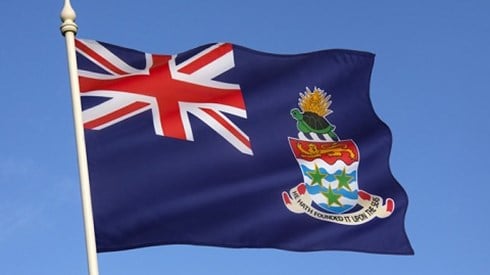Cayman Issues 14 New Captive Insurer Licenses in Second Quarter 2018

July 18, 2018

The Cayman Islands Monetary Authority (CIMA) reported that it issued 14 new captive insurer licenses in the second quarter of 2018. Highlights from the CIMA data are presented in the tables below.
The following table depicts the number of new B, C, and D licenses issued for the quarter as reported by CIMA.
|
Licenses Issued 2Q 2018 |
New Licenses as of 6/30/18 |
|
Class B(i) insurer |
5 |
|
Class B(ii) insurer |
1 |
|
Class B(iii) insurer |
4 |
|
Class C insurer |
1 |
|
Class D insurer |
1 |
|
Portfolio insurance company (PIC) |
2 |
|
Total Licenses |
14 |
The running total of Class B, C, and D licensees broken out by category and license class are shown in the two tables below, as reported by CIMA.
|
Category (B, C, and D licenses) |
Total License Count as of 6/30/18 |
|
Commercial insurer |
31 |
|
Group captive |
120 |
|
Pure captive |
314 |
|
Reinsurance company |
64 |
|
Segregated portfolio company (SPC) |
145 |
|
Special purpose vehicle |
24 |
|
Total |
698 |
|
License Class |
Total License Count to Date |
|
Class B insurer |
669 |
|
Class C insurer |
25 |
|
Class D insurer |
4 |
|
Total |
698 |
"Pure captives and group captives represented the two main categories, with 314 and 120 companies respectively. Twenty-one percent (21%) of the total Class 'B,' 'C,' and 'D' insurance companies were formed as segregated portfolio companies, with over 600 segregated portfolios," according to CIMA's website.
The website also reported that "the Cayman Islands is the leading jurisdiction for healthcare captives representing almost one-third of all the captives.… Medical Malpractice Liability ("MedMal") continues to be the largest primary line of business with approximately 32% companies (re)insuring MedMal, and Worker's Compensation the second largest with 22% companies assuming this risk."
Further, the website said that 90 percent of the Cayman insurance industry is composed of companies insuring North American risks.
Over the past 5 years, CIMA issued new captive insurance company licenses as follows.
|
Year |
Licenses Canceled |
Licenses Issued |
Total Licenses |
|
2013 |
19 |
39 |
761 |
|
2014 |
24 |
23 |
760 |
|
2015 |
74 |
22 |
708 |
|
2016 |
36 |
39 |
711 |
|
2017 |
48 |
33 |
696 |
Insurance Managers Association of Cayman (IMAC) Breaks Down Cayman's Captive Insurer Categories
Class B
The Class B license category under the insurance law captures captive insurance companies, including pure captives, SPCs, group captives, association captives, special purpose vehicles, open market insurers, and rent-a-captives.
The Class B license is subdivided into a Class B(i), a Class B(ii), and a Class B(iii). Which subclass applies depends upon the percentage of related business that the captive writes. Related business is business originating from the captive's members or the members of any group with which the captive is related through common ownership or a common risk management plan, or as determined by CIMA. The applicable subclasses are as follows.
- Class B(i): a captive that writes 95 percent or more related business by reference to net premiums
- Class B(ii): a captive that writes more than 50 percent related business by reference to net premiums
- Class B(iii): a captive that writes 50 percent or less related business by reference to net premiums
Most single-parent captives will fall within Class B(i).
The reason for the subclasses is to enable CIMA to differentiate between different categories of captives with regard to minimum capital, prescribed capital, and margin of solvency requirements.
- Class B(i): $100,000
- Class B(ii): $150,000
- Class B(iii): $200,000
Class C
The Class C license category under the insurance law includes entities that provide reinsurance through the issuance of insurance-linked securities such as catastrophe bonds, sidecars, collateralized reinsurance, or similar instruments.
Class D
The Class D license category under the insurance law includes commercial reinsurers that carry on reinsurance business and such other business as approved by the authority.
PICs Explained by IMAC
An SPC (aka protected cell company or segregated account company) may incorporate one of its cells by establishing a PIC under it. Once the PIC is registered with CIMA, it may write insurance business in its own name as a separate legal entity—an exempted company limited by shares.
Several key points make PICs noteworthy.
- A PIC can contract with other cells and other PICs within the SPC, which facilitates reinsurance, quota sharing, and risk pooling.
- Although the PIC is controlled by voting shares by its SPC, participating shares can be issued to those with an economic interest in the PIC.
- A PIC can have a different board of directors from that of the controlling SPC, providing for greater governance flexibility.
- The PIC is recognized as a separate legal entity for US tax purposes, including having its own federal tax identification number.
- A PIC can be wound up without affecting its controlling SPC or other PICs, or a PIC can merge with another captive.
- A foreign captive can redomicile to Cayman as a PIC where it may not be of sufficient size to operate as a stand-alone captive.
July 18, 2018
